The quirky charm of Norwegian design

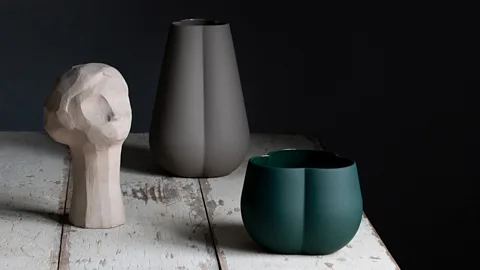
The national temperament of Norway is shy, and the design aesthetic is playful and unique. Clare Dowdy explores why this overlooked country has a Scandi style all of its own.
Minimal, functional, good-looking and democratic – Scandinavian design is a major force in furniture and interiors, and has been for decades. This corner of northern Europe is awash with mid-century design legends like Arne Jacobsen, Verner Panton, Alvar Aalto and Bruno Mathsson.
But this catch-all term hasn’t been living up to its name. The big guns of Scandinavian design are the Danes, (like Jacobsen and Panton), the Finns (Aalto), and to a lesser extent the Swedes (Mathsson). What about their next-door neighbours?
More like this:
As far as populations go, Norway isn’t the region’s minnow – with a population of 5.4m, it’s about the same size as Finland and Denmark, and all three are around half the size of 10m-strong Sweden. Despite that, Norwegian design has been punching below its weight. To call this wealthy nation the poor relation seems a bit of a stretch – but when it comes to design, it has a ring of truth. Among its neighbours, the Norwegian national stereotype is of an uneducated country bumpkin in a knitted sweater, with a fish close at hand. Yet this outdated cliché and its lowly position in the Scandi design pecking order has given Norwegian creativity its own flavour, and a potential edge.
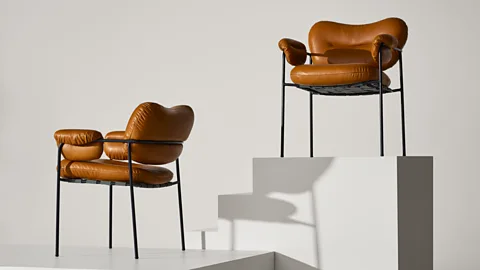 Fogia
FogiaThe locals put their relatively low profile down to a mix of factors, ranging from the highs and lows of oil and poverty, to national temperament. Norway was heavily bombed in World War Two, its furniture factories destroyed. A cottage industry on the rural, elongated west coast took their place. Here, between fjords and mountains, farmers who had always made furniture for themselves and had access to forestry, started businesses. One such entrepreneur was Lars Karl Hjelle, and the third-generation brand LK Hjelle still manufactures in the village of Sykkylven.
“It wasn’t about craftsmanship at that time,” says Morten Hippe, of young Norwegian furniture brand Eikund, “but about producing simple design that could be delivered quickly”.
As the nation recovered in the 1950s, those basic home furnishings were in need of an upgrade. A talented cohort of design graduates fresh out of college led the charge. They had been trained up by Arne Korsmo, the head of furniture and interiors at the Norwegian National Academy of Craft and Art Industry. A hugely influential architect in the international style, Korsmo was known for his villa designs, some of which – like the 1930s Villa Stenersen – are regarded as masterpieces of Norwegian functionalism.
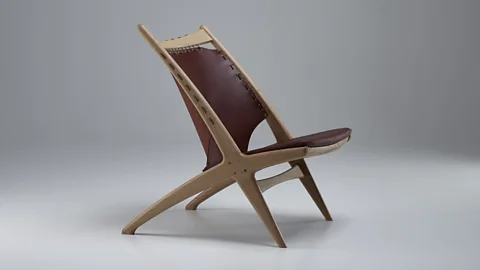 Eikund
EikundHe and his wife Grete Prytz Kittelsen, an equally talented tableware designer, travelled to the US to meet modernist pioneers including Frank Lloyd-Wright, Ludwig Mies van der Rohe and Charles and Ray Eames. “They were an amazing couple, networking with high-profile people in both architecture and design,” says Benedicte Sunde, curator of the annual contemporary design exhibition Norwegian Presence.
Back at home, Korsmo’s experiences meant his graduates “were on a par with their neighbours”, says Dr Widar Halén, director of design and decorative arts at Oslo’s National Museum of Art, Architecture and Design. Many, like Fredrik A Kayser, Torbjørn Afdal and Torbjørn Bekken, produced stylish pieces for those west-coast workshops. They and their peers were on a roll, taking part in touring exhibitions of Scandinavian design and winning international awards.
Business was booming, until Norway discovered oil in the 1960s. The nation’s gain was design’s loss. “Skilled people left the industry and we now had money to import furniture. We lost a lot of production here,” says Hippe.
Sunde elaborates: “When oil struck, the government’s focus and money went into the North Sea, and the focus on design for export disappeared. Small manufacturers couldn’t keep up.” Just as the Norwegian government was taking its eye off the design ball, its neighbours – who could only dream of Norway’s natural resources – were ing their furniture makers with state funding, and heavily promoting designers abroad.
 Lars Tornøe
Lars TornøeHowever, Hippe is not convinced that such an approach would have worked for Norwegians, anyway. He believes that the idea of self-promotion wouldn’t have sat well with them. “We don’t want to brag or stand out, we’re a shy country,” he says. Historically, Norwegians have had a reputation for being reserved and distant – hardly suitable traits for trumpeting one’s talents.
So while Norway’s best mid-century furniture fell out of production, its rivals were keeping the flag flying by relentlessly reissuing. From Finn Juhl’s Model 45 Easy Chair, and Hans Wegner’s Wishbone Chair, to Aalto’s Stool, Model No. 60, and Jacobsen’s Egg Chair and Swan Chair, these pieces were elevated to icons of Scandi design.
Today, contemporary creatives – even in Norway – are hard pushed to name many Norwegian designers from those halcyon days. London-based Danish designer Nina Tolstrup is blunt about it: “Norway was invisible on the design scene from 1900 to 1990.” Only one mid-century master springs to mind for her: Hans Brattrud, designer of the Skandia chair.
A free rein
But the fact that these designs were largely lost or forgotten plays into the hands of the current generation. In those countries where the 1950s have never gone away, “contemporary designers have felt it as a burden – they can’t produce new ideas because reproduction is so dominant,” says Dr Halén. “It hampers them.”
 Hallgeir Homstvedt
Hallgeir HomstvedtAs a Dane, Tolstrup feels this: “The new designers in Norway over the last generation have had the benefit of not having a heavy design history, which for Danish designers for many years was a burden, as it was very difficult to rise above the strong historic design legacy.”
Having less conspicuous roots has given the Norwegians more of a free rein. “The design scene in Norway has really been blooming over the last ten years,” Norwegian designer Hallgeir Homstvedt tells BBC Designed. He cites Lars Tornøe’s Dots, a series of large, turned-wood coat hooks. “Millions of Dots have been sold, and they have sparked a whole new product category of sculptural coat hooks,” says Homstvedt.
This freedom has translated into a certain quirkiness. “Many [Norwegian designers] are recognised as having a warm playfulness in the products they design,” says Elizabeth Hurlen, export manager of LK Hjelle, which produces the witty Boy poufs by pioneering design studio, Norway Says.
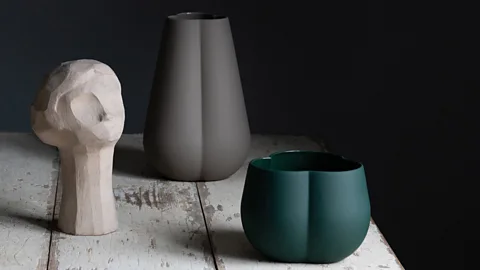 Lars Tornøe
Lars TornøeHjelle is one of a handful of homegrown brands, and produces work by some of the country’s most established living designers, including Homstvedt, Andreas Engesvik, and Anderssen & Voll, as well as Norway Says. In contrast, its neighbours can boast of many more world-recognised brands like Hay in Denmark, Hem in Sweden, and Finnish brand Muuto.
This quirkiness and ruggedness has manifested itself at this year’s Norwegian Presence show, where much experimentation with raw materials is evident, such as stone off-cuts and scrap aluminium. Ali Gallefoss has cast aluminium in pieces of stone, while Vilde Hagelund and Nils Stensrud have produced pieces in birchwood. Sunde describes this approach as a reaction against glamour. “This gives them a raw aesthetic which has its own beauty,” she says, “It doesn’t look luscious or elegant, something that high-end people would buy. It’s more new-wave and avant-garde. They don’t go for the beauty that people expect, so it makes us think of beauty in a different way.”
The work of Norwegian Presence’s 11 designers sits alongside seven local manufacturers including Fjørdfjesta and Vestre. But with few homegrown brands to design for, much design talent has been exported. “Norway has mainly been incubating designers, who go on to work for international brands,” says Homstvedt. As well as Tornøe’s work for Muuto, he cites Engesvik’s Bollo chair for Fogia, Counterbalance lamp by Daniel Rybakken for Luce Plan, Tibu by Anderssen & Voll for Magis, and Half & Half, which he designed with Jonah Takagi for Roll & Hill.
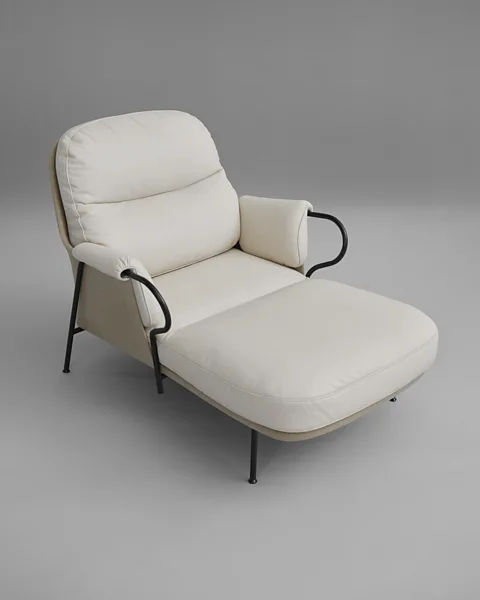 Fogia
FogiaMeanwhile, it’s catch-up time for those ‘lost’ designers. For Norwegian brands like Fjordfiesta, Eikund and Hjelle, reissuing their country’s mid-century creations is a calling. “Now, our mission is not to just sell fish and pump up oil; we need to know our heritage,” says Hippe at Eikund.
Dr Halén believes that the next step is to comfortably accommodate retro nostalgia, alongside the need for fresh talent. “We want good new designers to flourish, but we also want to buy icons. Balance is needed.”
Perhaps in Norway, contemporary design can thrive while classics can revive – it’s an interesting two-pronged approach that could help the country take its rightful place at the Scandi-designed table.
If you would like to comment on this story or anything else you have seen on BBC Culture, head over to our Facebook page or message us on Twitter.
And if you liked this story, sign up for the weekly bbc.com features newsletter, called The Essential List, a handpicked selection of stories from BBC Future, Culture, Worklife and Travel, delivered to your inbox every Friday.
